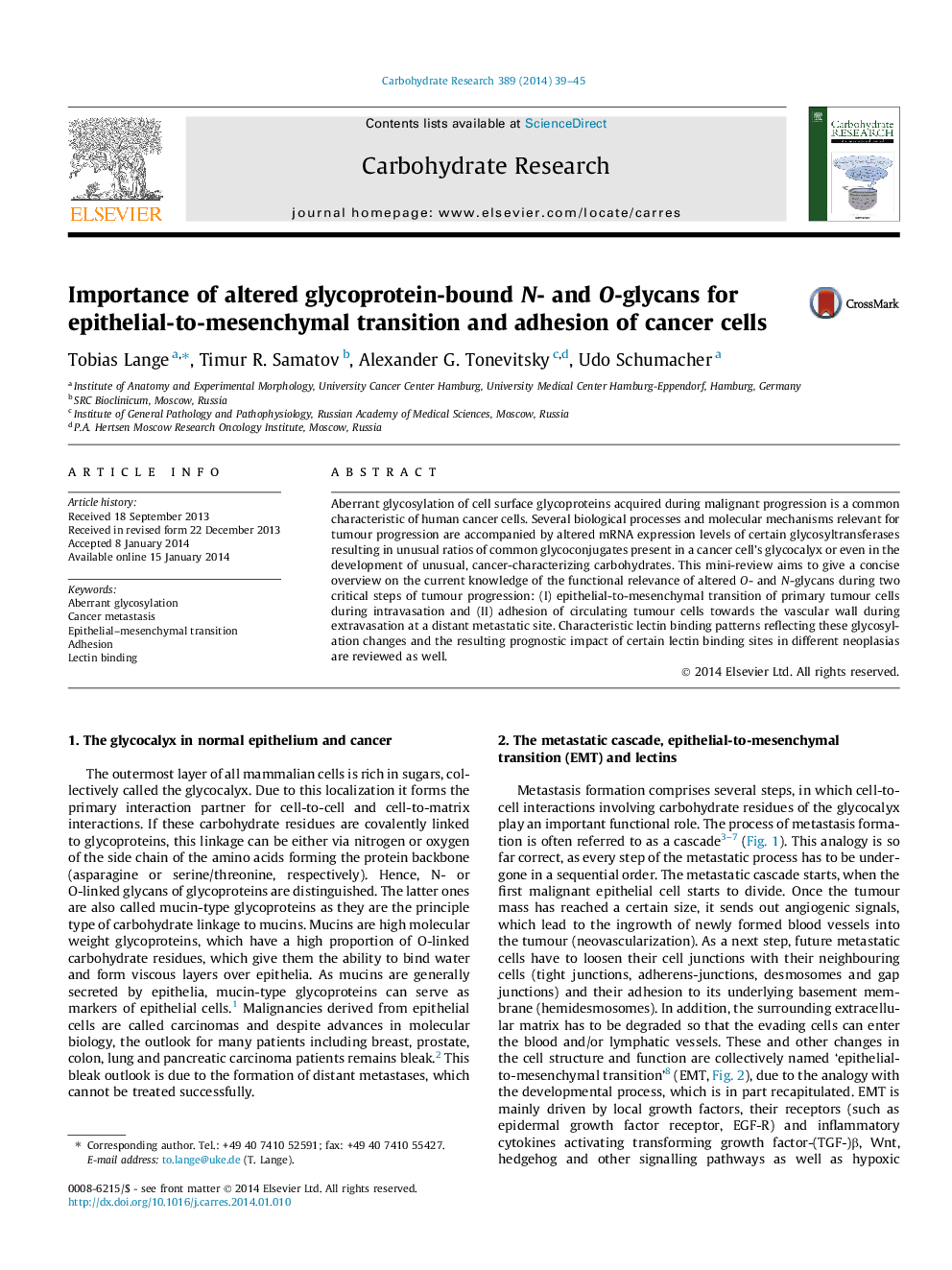| Article ID | Journal | Published Year | Pages | File Type |
|---|---|---|---|---|
| 1387650 | Carbohydrate Research | 2014 | 7 Pages |
•O-Glycan core structures play opposing roles during malignant progression.•Sialylated Lewis antigens promote metastasis by mediating tumour cell adhesion.•The ratio of GnT-III to GnT-V activity regulates epithelial-to-mesenchymal transition.•GnT-Vb contributes to a more aggressive phenotype specifically in prostate cancer.
Aberrant glycosylation of cell surface glycoproteins acquired during malignant progression is a common characteristic of human cancer cells. Several biological processes and molecular mechanisms relevant for tumour progression are accompanied by altered mRNA expression levels of certain glycosyltransferases resulting in unusual ratios of common glycoconjugates present in a cancer cell’s glycocalyx or even in the development of unusual, cancer-characterizing carbohydrates. This mini-review aims to give a concise overview on the current knowledge of the functional relevance of altered O- and N-glycans during two critical steps of tumour progression: (I) epithelial-to-mesenchymal transition of primary tumour cells during intravasation and (II) adhesion of circulating tumour cells towards the vascular wall during extravasation at a distant metastatic site. Characteristic lectin binding patterns reflecting these glycosylation changes and the resulting prognostic impact of certain lectin binding sites in different neoplasias are reviewed as well.
Graphical abstractFigure optionsDownload full-size imageDownload as PowerPoint slide
